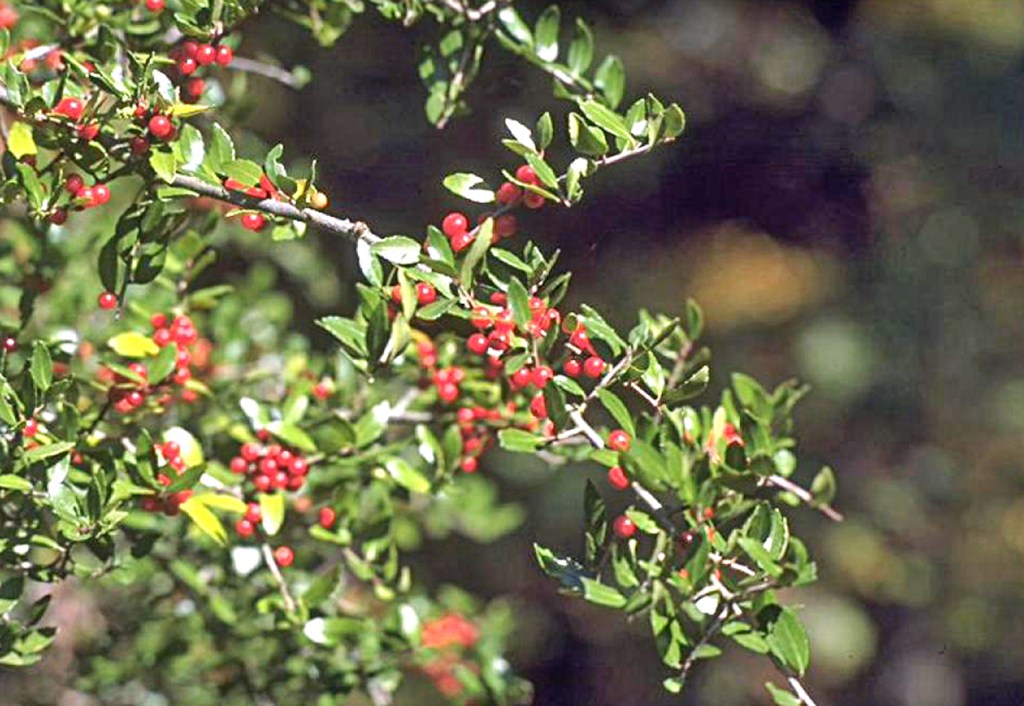HOME & GARDEN SPOT: Yaupon holly
Published 7:00 pm Wednesday, April 3, 2019

- Yaupon is the only known native plant in North America that contains caffeine. It was used by native Americans of the southeast for ceremonial and social purposes.
Question: While in South America on a mission trip, I enjoyed a caffeinated drink called “yerba mate,” made from a native plant in South America. Do you know of any native plants to North America that contain caffeine?
The national drink in many South American countries is the aforementioned caffeinated beverage, yerba mate. Yerba mate comes from a holly plant native to South America.
Trending
I visited Uruguay several years ago, and everyone drank this tea. When I inquired about what plant it was derived from, no one seemed to know.
Of course, we would never be that ignorant about what we drink. I am sure everyone knows the tea we commonly drink comes from a camellia bush known as Camellia sinensis. I suggest you keep that information handy as you never know when it might be a Jeopardy question.
When I returned from my trip to South America, I was talking to Tom Dodd Jr., a very knowledgeable and well-traveled nurseryman from Mobile. He immediately identified the plant by its scientific name, Ilex paraguariensis. He also informed me that we indeed do have a North American native plant with similar qualities called yaupon holly.
Yaupon is the only known native plant in North America that contains caffeine. It was used by native Americans of the southeast for ceremonial and social purposes. It is referred to historically as “black drink” and was used especially for purification.
In Alabama, many reports of its use by Creek Indians are given in historical accounts of explorers, traders and military men. Yaupon holly grows naturally in sandy soils in coastal areas but it is believed to have been cultivated inland for the purpose of harvesting the leaves for tea. It is likely the only woody plant purposely cultivated by southeastern native Americans according to anthropologist, Charles Fairbanks.
The renowned explorer William Bartram mentions the use of black drink among the Alabama Creek Indians in the winter of 1775 at Tuckabatchie in today’s Elmore County. I hesitate to tell you how the native Americans used the drink but the Latin name, Ilex vomitoria will likely give it away.
Trending
A description of its use by the Alabama Creek Indians says, “their mode of disgorging, or spouting out the black drink, has not the most agreeable appearance.” This sounds like an understatement to me but the description further states “after drinking copious amounts, the warrior, by hugging his arms across his stomach, and leaning forward could hurl the drink a good six or eight feet. The further one could spout the drink the greater the accomplishment.”
Unfortunately, the latin name and the historical use may have combined to doom the development of this native drink as a national favorite. However, according to the book “Black Drink: A Native American Tea” by Charles Hudson, the tea was widely used by non-native people in coastal North Carolina as early as the early 18th century. Interestingly, it continued to be available in a few coastal North Carolina restaurants up to the publication of that book in 1979.
A German traveler who visited that area in 1794 reported that yaupon tea was more commonly used than tea from China. I have to wonder if that little ruckus we had over tea in Boston was a contributing factor at that time. Over time, however, the drink grew out of favor and was considered the drink of poor uncultured people.
By the 1890’s the “sophisticated” peoples of coastal North Carolina would refer to the uncultured rural peoples of the Outer Banks region as “yaupon eaters.” I can just hear Jeff Foxworthy’s great-great-grandfather now: “You might be a yaupon eater if you have three covered wagons on blocks in front of your shack” or “You might be a yaupon eater if you serve your afternoon tea with cornbread.”
We don’t grow yaupon holly for tea anymore (although you could) but it is a very good native shrub that should be used in everyone’s landscape. They come in many forms from very dwarf, to topiary shrubs, to a beautiful multi-trunked small tree.
For more information about this great native plant visit https://bit.ly/2WFmecm. Also, if you are interested in learning more about the native American’s use of this plant check out the book referenced above.
— Glover is the Extension coordinator in Cullman County. For information on topics related to the home and garden, contact any office of the Alabama Cooperative Extension System. The Limestone County Office is located at 1109 West Market St. in Athens. Office hours are 8 a.m.-4:30 p.m. Monday through Friday. For more information, call 256-232-5510 or visit www.aces.edu.





